Jordan Itinerary For 7 Days
- By Seema
- Updated July 20, 2025
Jordan is an excellent holiday destination that is gaining popularity with each passing year. It’s a land of mystery, legend, and breathtaking beauty, where fascinating cultures and rich history come together to create a phenomenal experience. Jordan, despite its modest size, has a lot to offer. The country is home to spectacular archaeological sites, otherworldly landscapes, the lowest point on the planet, some of the best-preserved Roman ruins, delicious food, and much more.
In only one week, you may travel back in time to the ancient city of Petra, embark on a unique adventure in Wadi Rum, float in the healing waters of the Dead Sea, savor delicious traditional Jordanian cuisine, and experience exceptional hospitality. Whether you are an adventurer, outdoor enthusiast, photographer, spa-lover, foodie, or history buff, Jordan should go on your bucket list.
You could cover the highlights of Jordan in 5 days, but it would be far too exhausting. Ideally, you’ll need to set aside seven days to explore Jordan. However, if you are short on time, an option to make it a 5-day itinerary is available at the end of this post.
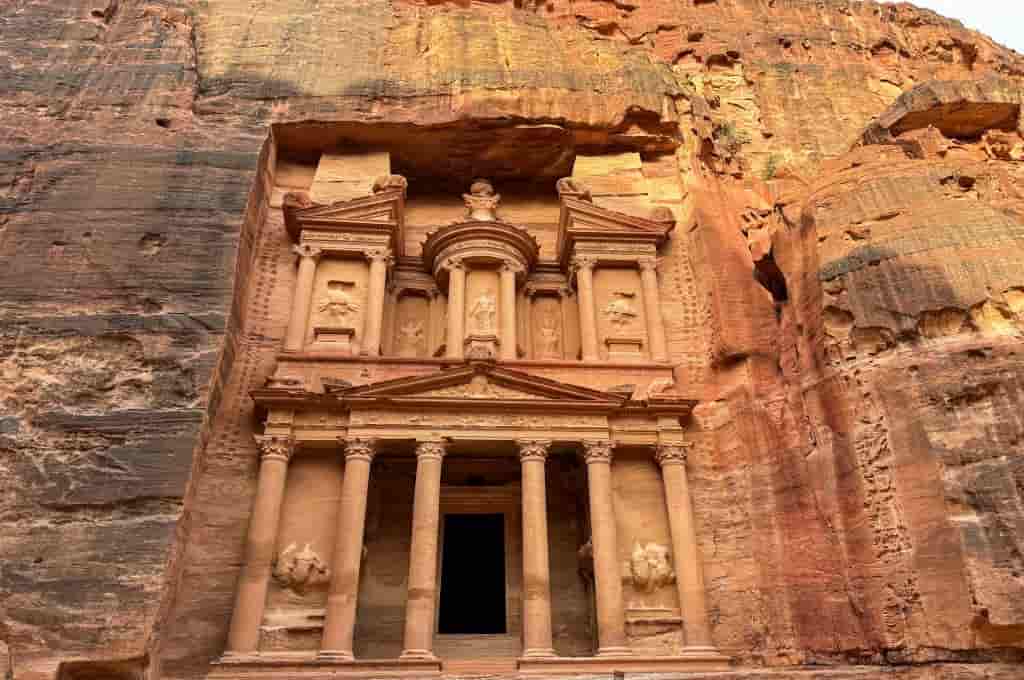
Table of Contents
Best Places To Visit in Jordan
1. Petra, Jordan
Petra Archaeological Park is a UNESCO World Heritage Site and one of the New Seven Wonders of the World. The ancient city, often known as the ‘Rose City’ owing to its distinctive rose-colored stone, is home to magnificent architecture and an elaborate water conduit system. The Nabataeans built the stunning sandstone city of Petra in the third century BC, carving palaces, tombs, temples, storerooms, and stables into the soft sandstone mountains.
Petra lay buried for centuries due to repeated and devastating earthquakes. It was unknown to the Western world until 1812, when it was rediscovered by the Swiss traveler Johann Ludwig Burckhardt – hence the nickname ‘Lost City.’ The fact that 85% of Petra remains submerged and unexplored is intriguing. Today, Petra has become the ultimate symbol of Jordan, drawing thousands of visitors each year.
The full-day Petra visit will cover the highlights of the enigmatic capital city, beginning with the Siq. The Siq is a narrow, meandering ravine flanked by towering sandstone cliffs. It is the main gateway to the ancient city of Petra. Al-Khazneh (The Treasury), Petra’s iconic monument, stands at the end of the jaw-dropping Siq. While the famed Treasury is as spectacular as described, take some time to explore the hidden gorges and other majestic structures that make Petra so special.
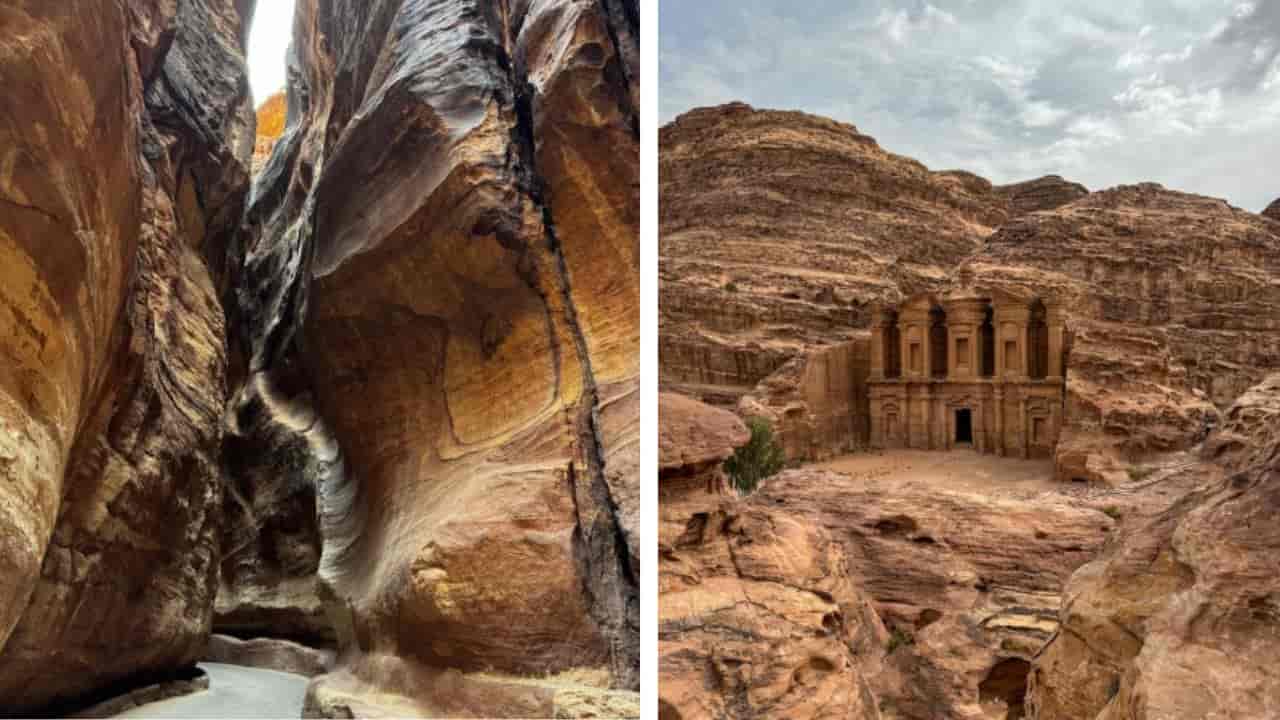
Beyond the awe-inspiring Treasury, the road leads into the Outer Siq, passing by the Street of Facades, the Amphitheatre, the Grand Royal Tombs, and the remnants of a Cathedral. The Monastery is Petra’s second most popular site, after the Treasury. It’s a steep climb (800 stairs one-way) to reach the Monastery, as it’s located almost at the end of the city, but it’s worth the effort. You can hire a donkey if you’re not up for the hike.
Instead of using the main entrance, you can enter through Petra’s ‘Backdoor Entry’. Using this lesser-known entry, you will first see the Monastery at the back of the park before walking to the main entrance, passing by Petra’s highlights, and saving the Treasury for the grand conclusion. This way, you can also reverse the 800-plus-step climb to the monastery by going down the steps. I preferred utilizing the main entrance because it allowed me to enter the park when the gate opened at 6:00 a.m. and reach the Treasury before the crowds arrived. By doing so, I could have the entire site largely to myself and take all the photos that I wanted. However, you can pick whatever entrance you like. The Backdoor Entry opens later, about 7:30 a.m., and is a little complicated, so do your homework.
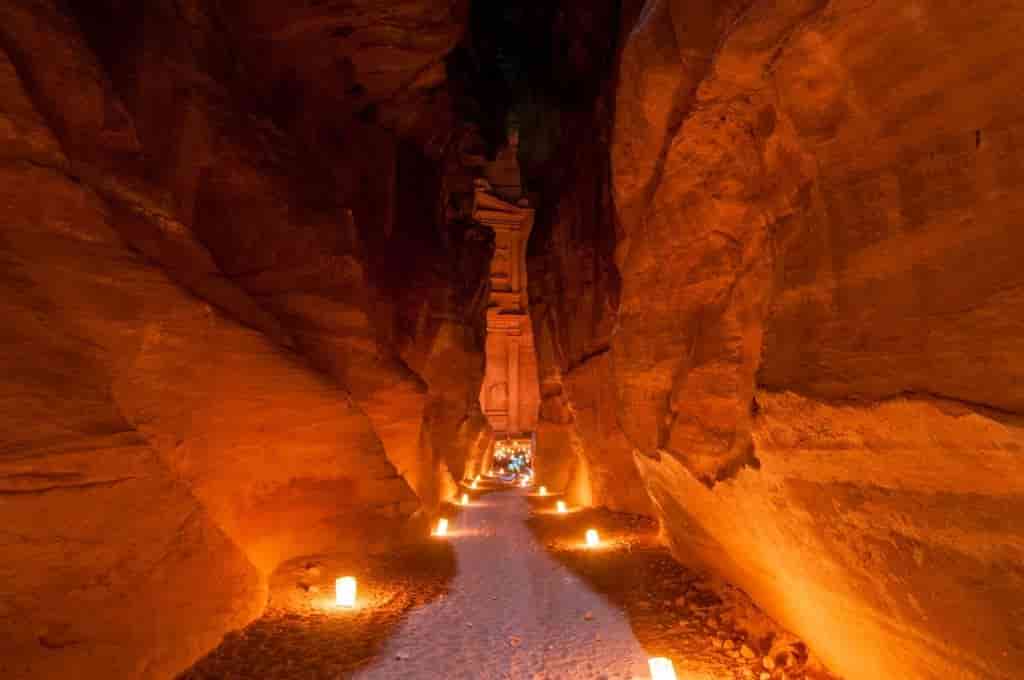
Petra at Night – If your visit falls on a Monday, Tuesday, or Thursday night, you will also have a chance to see Petra at Night. It’s a light show featuring local music, where hundreds of candles illuminate the entire area. Petra at Night tickets are sold separately by the park for 17 JD per person. You must buy these tickets at the main ticket office by 5 p.m. The show is not included in a one-day ticket or Jordan Pass. It’s not particularly special, so you can skip it if you’re exhausted.
Little Petra – Little Petra, also known as Siq el-Barid, is considerably smaller than the main Petra Archaeological Park. It most likely originated during the Nabataean Empire in the first century AD. Beautiful rock-cut structures are etched into the walls on both sides of the 350-metre-long sandstone canyons. Little Petra does not charge an entry fee. Note that Little Petra is also an alternative entrance to Main Petra, accessible via the ‘Backdoor Entry’.
Tips for Petra
- Start your day early to escape the midday heat. Additionally, with fewer people around, you’ll be able to take better pictures and have a more enjoyable overall experience. The gate opens at 6:00 a.m.
- Petra’s entrance charge is 50 JD per person for one day and 55 JD for two days. It is included in the Jordan Pass.
- Bring sunscreen, a hat, and water, and come prepared for a long day of trekking under the blazing sun.
- Bring some cash for tips and to grab water or snacks along the route while in the park.
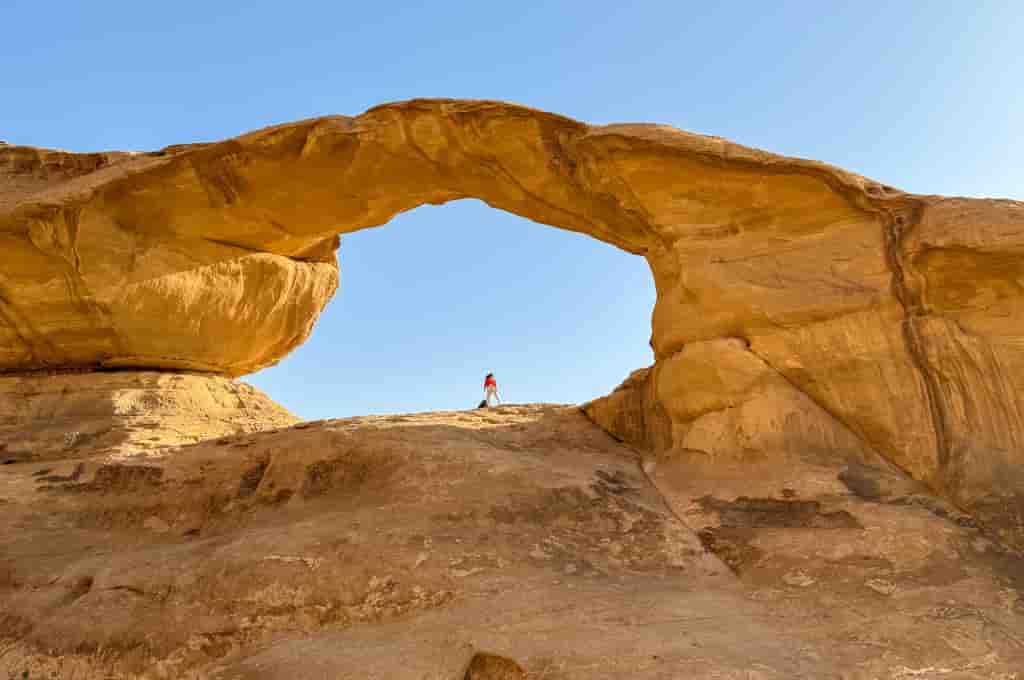
2. Wadi Rum, Jordan
Wadi Rum, also known as the Valley of the Moon, is a visually striking desert landscape that stretches out to the horizon. The blood-red sands and otherworldly sandstone cliffs create an unnerving Mars-like terrain, making you feel as if you’ve stepped into another planet. Miles of golden sands are interspersed by narrow gorges, natural arches, bizarre rock formations, jagged mountains, massive landslides, and beautiful caverns. Inscriptions, petroglyphs, and archaeological relics at the site indicate 12,000 years of human occupancy. The severe terrain is a popular filming location, having been used in films such as Martin, Lawrence of Arabia, Dune, and Star Wars.
Wadi Rum accommodations differ from what you may be accustomed to. You can find everything from affordable traditional Bedouin tents to ultra-luxurious bubble domes. If you’re seeking a low-cost option, consider staying at a Bedouin camp, where you can camp right in the middle of the desert and learn about Bedouin culture. However, Wadi Rum bubble hotels are an ideal way to witness the extraordinary sandstone landscapes and star-filled skies of the desert. The absence of artificial lights in the desert allows for unparalleled stargazing. A typical stay at a Wadi Rum camp includes enjoying a traditional Bedouin dessert meal, cooked underground.

Jeep rides, sandboarding, camel rides, and hiking are some ways to experience the Wadi Rum Protected Area. Jeep excursions are the quickest method to explore the most picturesque locations and archaeological sites. In a single tour, you can visit a variety of interesting spots, such as the Burdah Arch, Jabal Khazali, Martian Sands Dune, Nabataean inscriptions, Lawrence Canyon, Lawrence House, Bedouin Tent, and Arch (Umm Al Froth). The number of stops is determined by the tour’s duration. Depending on your budget, the trips can last anywhere from 2 to 6 hours and usually conclude just after sunset.
3. Wadi Mujib, Jordan
Adrenaline junkies planning a trip to Jordan should include Wadi Mujib on their agenda. The Mujib River in Jordan flows into the Dead Sea, the lowest spot on Earth, via a narrow, deep gorge. Wadi Mujib, the spectacular gorge, soars above the Mujib River and runs for 70 km. While there are other routes in Wadi Mujib, the Siq Trail is the most serene of them all, remaining incredibly beautiful and exciting. It’s similar to walking along the road leading to the Treasury in Petra, but with water and waterfalls. You will have a thrilling experience as you climb, splash, wade, trek, float, slide, and jump in the gorgeous gorge for two hours! You may think of it as a natural water park.
The trail is open from April 1st to October 31st, from 8:30 a.m. to 3:00 p.m. However, this is mostly dependent on the weather. Rainfall affects the strength of the river flow and the possibility of accessing the trail. The Mujib Adventure Centre currently serves as a starting point for the Siq Trail. The distance to travel is 1.5 kilometers one way, which will take 2 to 3 hours to finish back and forth. With a low to moderate difficulty level, it is suitable for anyone in reasonable shape. That water is warm, and assistance is available during the more challenging stretches. There are ropes to cling to. You have the option to stop and return at any stage. Expect to get completely drenched.
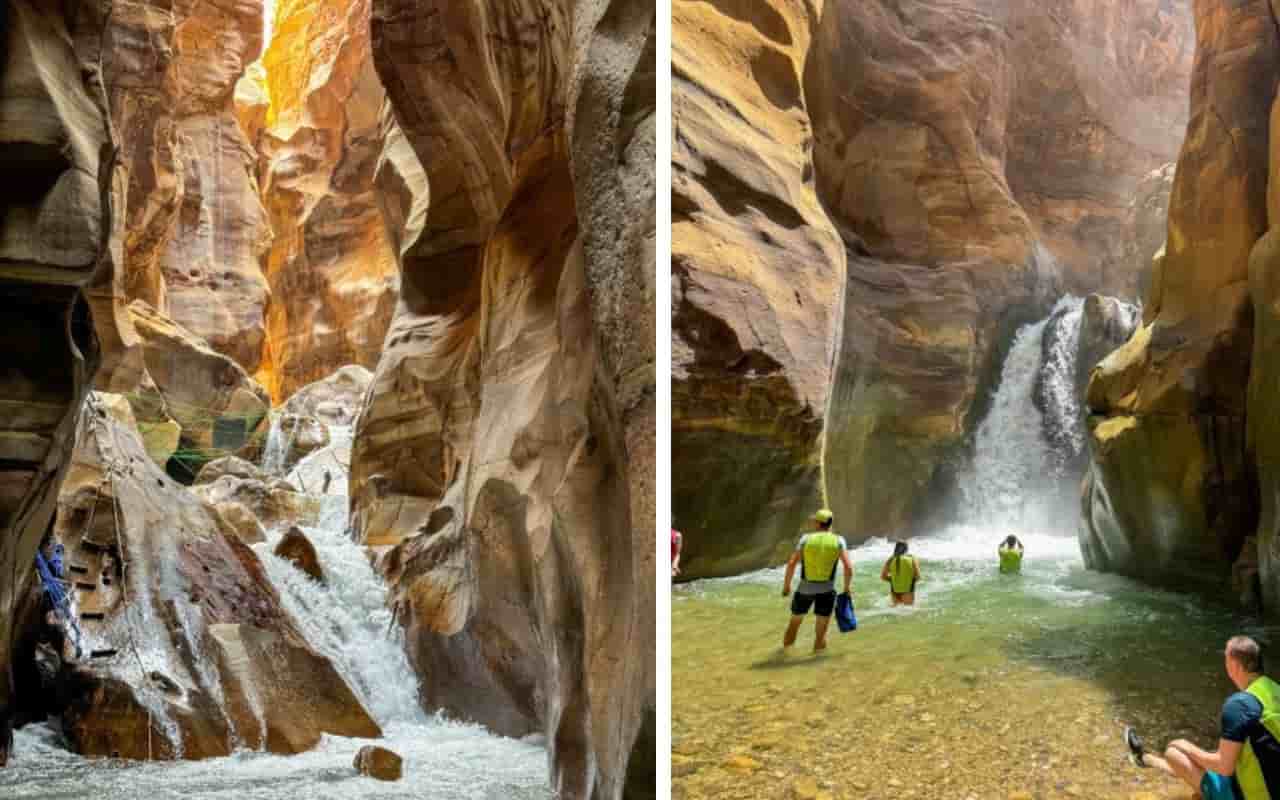
Tips for Wadi Mujib
- The visitor center has toilets and changing rooms, but no showers.
- Tickets cost 23 JD. The Jordan Pass does not cover admission fees for the Wadi Mujib Trail.
- Wear long-sleeved shirts and trousers to protect yourself from the rough edges and pebbles as you slide along.
- A life vest is mandatory and will be available at the starting point. Sunglasses are not required as you are mostly in the shade.
- Water shoes can be purchased for 5 JD. You can rent a waterproof bag for 10 JD.
- Reservations cannot be made in advance, so arrive at Wadi Mujib early at 8 am. Access to the narrow gorge is restricted to small groups to prevent overcrowding. If you arrive late, you may have to wait for a few hours before being allowed to enter.
- If traveling from afar, contact the Mujib Adventure Centre to confirm the Trail’s availability based on weather conditions.
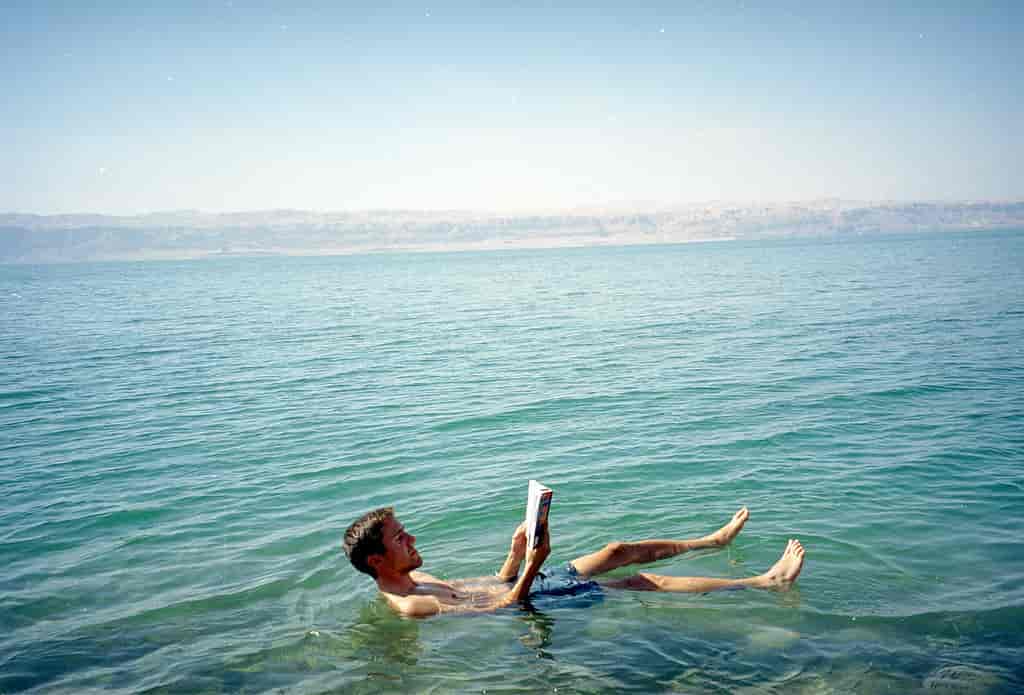
4. Dead Sea, Jordan
The Dead Sea, situated between Jordan and Israel, has the world’s lowest elevation, at 423 meters below sea level. The Dead Sea is a massive saltwater lake, not a sea. It is known for its extremely high salinity level, which is around ten times that of seawater. As a result, nothing can live in its water, hence the name “Dead Sea.” Swimming in the sea is unlike any other experience. Since human bodies are lighter than the density of the salted water, they are more buoyant in the Dead Sea, making it easy to float.
The Dead Sea is lined by luxurious resorts, making it a perfect spot to unwind and rejuvenate. Booking a resort with private access to the Dead Sea is the best way to fully enjoy your time here. If you are on a limited budget, consider the Dead Sea Spa Hotel, which offers reasonably priced accommodations compared to other options.
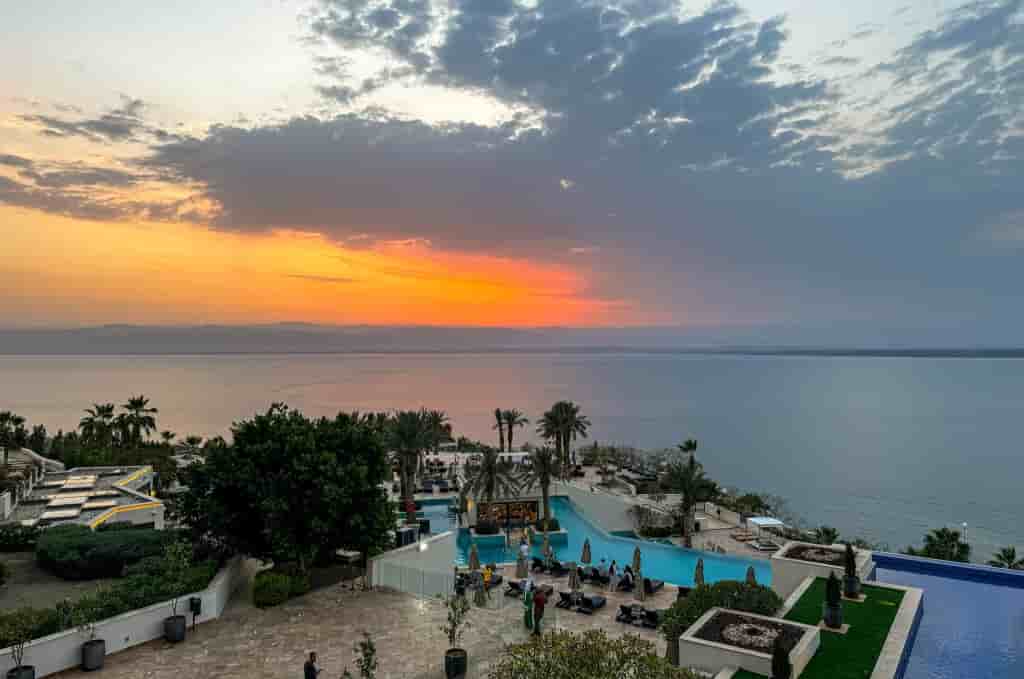
If your accommodation does not have beach access, you can visit Amman Beach for roughly 25 JD per person. So that you know, public beaches typically offer limited facilities and can become overcrowded during peak periods. Alternatively, you can get a Day Pass to one of the luxury resorts like Movenpick, Marriott, and Holiday Inn. The resorts usually charge between 30 and 70 JD for full access to the resort’s beach and amenities. If you are at a resort, they may have Dead Sea mud ready for you to apply to your skin. Experience the healing properties of the mud, which has a high mineral content and is great for your skin.
Tips For the Dead Sea
- Do not linger in the water for more than 10 minutes at a time, as salt is harmful to your skin.
- Take a shower as soon as you get out of the Dead Sea.
- Be cautious while floating in the sea, as the water can badly burn your eyes and mouth if it gets in.
- Don’t even think about swimming or diving in the Dead Sea water.
- Do not shave before your trip to the Dead Sea. And avoid taking a dip if you have wounds or cuts. It’ll sting like hell.
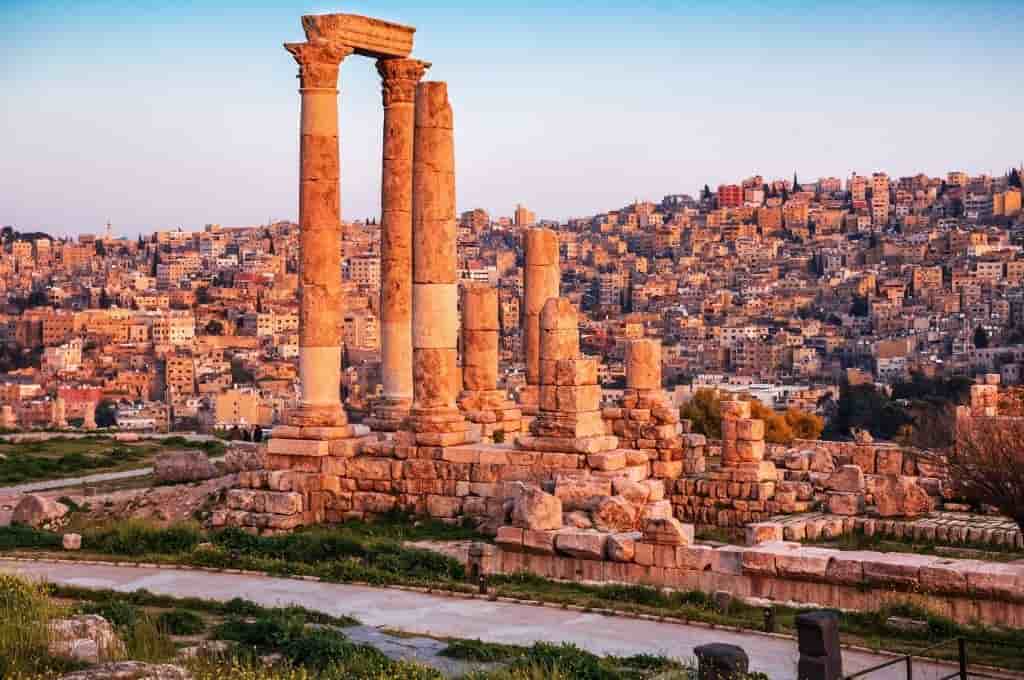
5. Amman, Jordan
Amman is an interesting fusion of the traditional and contemporary. The chaotic capital city is marked by elegant skyscrapers, luxurious hotels, stylish restaurants, exquisite art galleries, vibrant graffiti, and chic boutiques. Approximately half of Jordan’s population resides in the Amman region, making it a densely populated and bustling metropolis. Spend at least one night in Amman exploring the historic ruins, the local Souq, and the city’s main avenues. The marketplaces are brimming with fresh food, nuts, spices, dates, locally made apparel, and everything else you can think of. Amman boasts some of the finest Jordanian cuisine. You must try the Falafel from Al Quds (Rainbow Street) and Hashem (Downtown). For those with a sweet tooth, Habiba Sweets’ Knafeh is a must-have. Don’t be put off by the long queues outside the shop; they move pretty quickly.
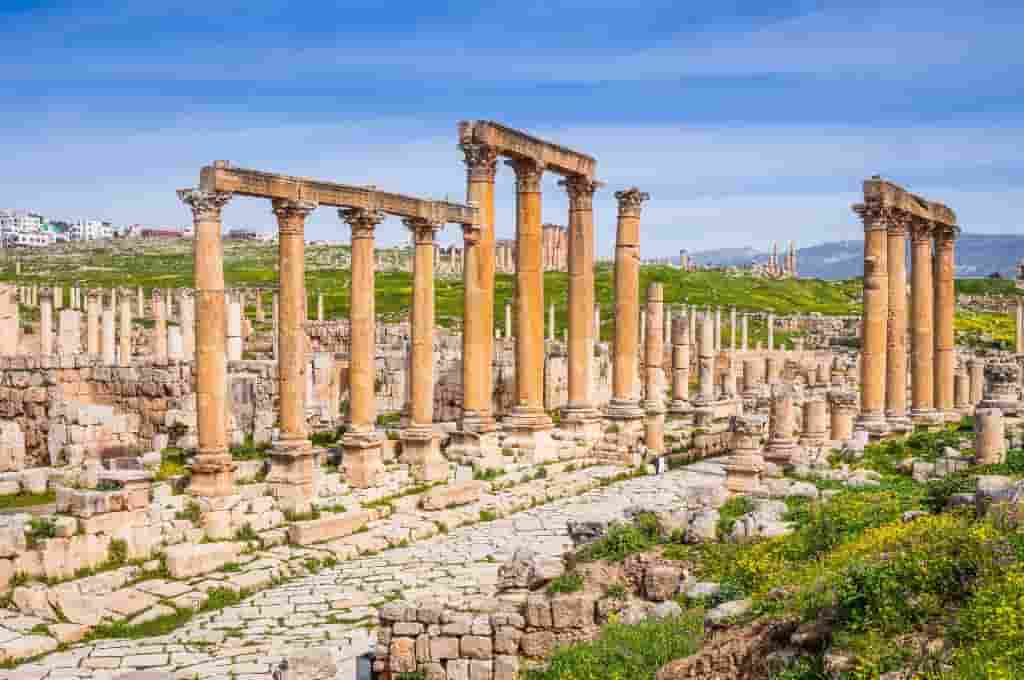
Places to visit in and around Amman
- The Citadel – An ancient archaeological site with remnants from multiple eras, notably the Roman and Byzantine periods. It is perched on a hill and offers a panoramic view of the old city.
- Roman Theatre of Amman – This well-preserved amphitheater from the 2nd century is quite impressive. It had a capacity of 6000 spectators, but after several earthquakes, it can currently only house 500 to 600 people.
- Rainbow Street – Seated atop Jebel Amman, Rainbow Street is an ideal spot to relax and soak in the city’s ambiance. Spend the evening at one of the many cafes, pubs, restaurants, and souvenir shops lining Rainbow Street
- Jerash – The spectacular remnants of the Roman city of Gerasa have earned Jerash the nickname ‘Pompeii of Jordan’. Its origins date back over 6500 years. Jerash is one of the world’s best-preserved Roman cities and a popular spot for tourists seeking a one-of-a-kind cultural experience. This renowned archaeological site provides valuable insights into the region’s rich history and is adorned with impressive Roman ruins, including churches, temples, and colonnaded streets. Don’t miss the majestic Hadrian’s Arch, South Theatre, Forum, Giant Hippodrome, Temple of Zeus, Temple of Artemis, Oval Plaza, and Cardo Maximus.
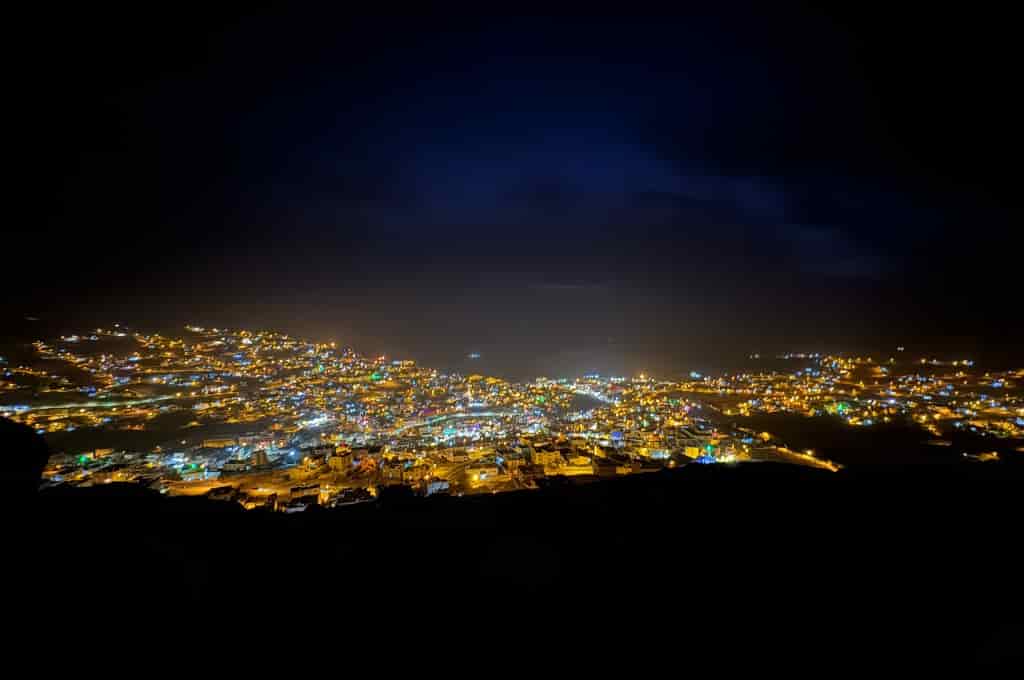
Moving Around in Jordan
Renting a car or hiring a driver is the most convenient way to travel in Jordan, as other options are minimal. There is only one domestic flight route connecting Amman with Aqaba. While there are tourist buses (JETT), they only operate to a few select destinations. You can use a mix of cabs, private transportation, and public transportation, but it is much less convenient. The other best option is to join an organized tour.
Jordan’s small size, efficient highways, and ease of travel make a road trip a perfect way to explore different parts of the country. To make the most of your seven days in Jordan and fully enjoy the suggested itinerary, consider renting a car. Please pre-book your vehicle and collect it upon arrival. But if you haven’t, you shouldn’t worry. It is straightforward to rent a car upon arrival at Queen Alia International Airport. If you do not want to drive, you can hire a driver for the duration of the trip. Many travel companies offer chauffeur-driven cars at a reasonable cost.
Should you buy the Jordan Pass?
Before you leave for your trip, you must purchase a Jordan Pass. Technically, you do not have to, but it will make things much more economical, simple, and convenient. The Jordanian government offers the Jordan Pass, which includes admission to over 40 of Jordan’s top attractions, including Petra, Wadi Rum, Jerash, Citadel, Roman Theatre, and more. It also covers the cost of your visa on arrival, which is 40 JD. The pricing of the Pass has been structured such that once you add up the cost of your visa and entrance to Petra, the Pass has already paid for itself.
If your country is eligible for a Visa on Arrival, purchasing a Jordan Pass is highly recommended, as it will cover the visa cost. The Jordan Pass comes with three alternatives. Depending on how many days you want to spend in Petra, you can choose a 1-day (70 JD), 2-day (75 JD), or 3-day (80 JD) Pass. To access the sites, you must obtain your Jordan Pass before arriving in the country and bring a printout or a PDF on your phone. For more information about the Jordan Pass, please visit this website.
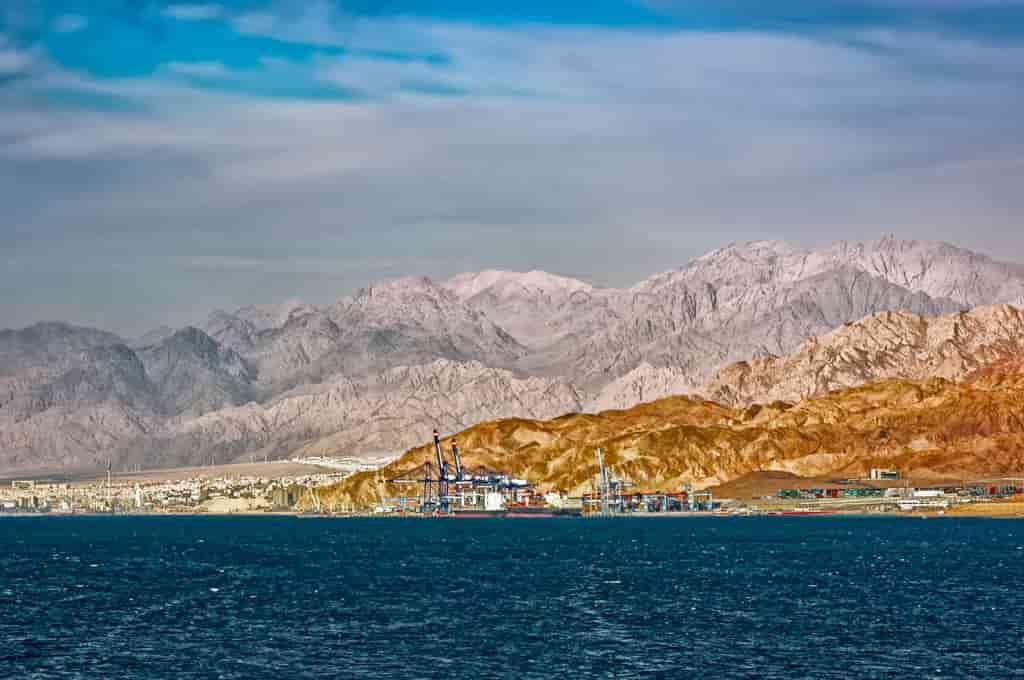
7-Day Jordan Itinerary
Day 1st of Jordan Itinerary -. Amman and Wadi Musa
Assuming you’ll be flying into Amman, this itinerary begins and ends in the capital of Jordan, Amman. However, we will not be stopping in Amman. The plan is to pick up the car from the airport and drive straight to Wadi Musa, where the archaeological site of Petra is located. The fastest way to get there is via the modern Desert Highway, which takes 3 hours. Please note that your arrival time will determine the agenda for the remainder of the day. You can visit Petra by Night on Mondays, Tuesdays, or Thursdays. Alternatively, you may drive to Qilae Altawali Viewpoint for stunning night-time city views.
Day 2nd of Jordan Itinerary – Petra
Today we’d be visiting Petra. The entry opens at 6 a.m., so arrive as early as possible to avoid the heat and crowds. Explore this archaeological wonder at your own pace, soaking in the grandeur of the surroundings. Make an effort to complete as many treks as you can. By the time you return to your hotel, you will be exhausted. Eat something and then rest. In the evening, you can visit Petra at Night (if open) or Little Petra. Spend the night at Petra.
Another option: If you are willing to commit to a tighter schedule, consider replacing the second night at Petra with the night in Aqaba. Located on the Red Sea coast, four hours from Wadi Musa, Aqaba is well-known for its gorgeous diving and snorkeling spots. On the third day, you can spend the morning snorkeling at the ‘Sunset Beach’ before leaving for Wadi Rum (1 hour drive).
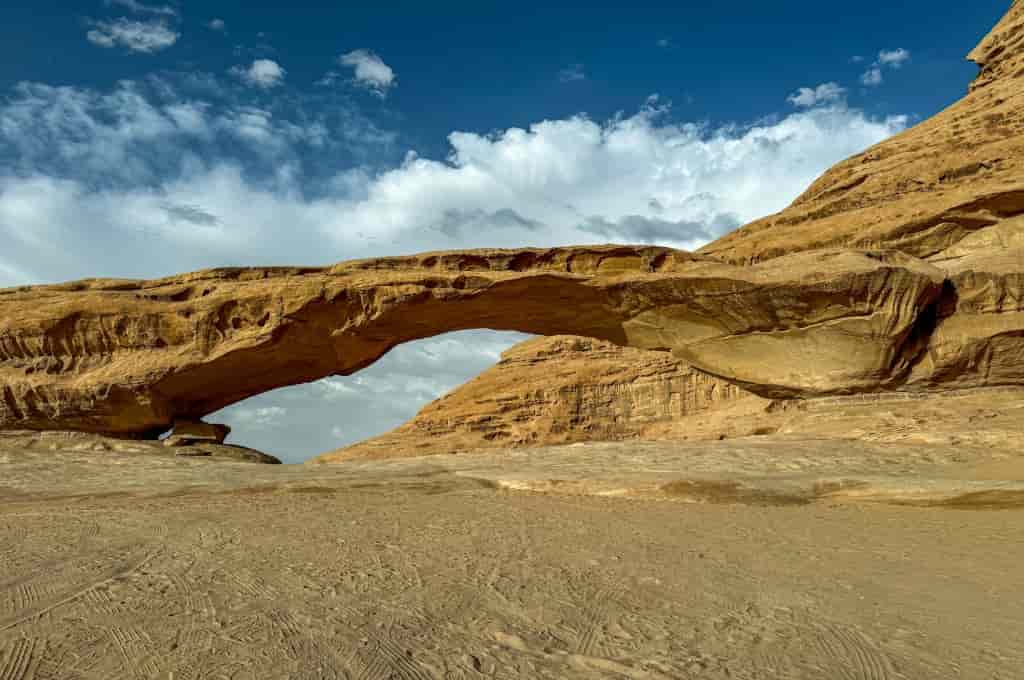
Day 3rd of Jordan Itinerary – Wadi Rum
Enjoy a hearty meal before embarking on your drive to Wadi Rum. Wadi Musa to Wadi Rum is less than a two-hour drive. All visitors to the Wadi Rum Protected Area have to go through the Visitor Centre and pay an entrance fee (5 JD per adult, exempt for those holding a Jordan Pass). Continue driving for approximately 6 kilometers until you arrive at Wadi Rum Village. Park your car there. Your accommodation will then arrange a ride to the hotel for you. After you arrive at the hotel, settle in and leave for your sunset tour. After a traditional dinner, return to your room to spend the night under the stars.
Day 4th of Jordan Itinerary – Dead Sea
It’s worth getting up early to witness the sunrise over the desert from a camel or a hot air balloon. Leave for the Dead Sea after breakfast. The journey takes about 4 hours, so please do not delay your departure. The route leads you north along the modern Desert Highway and Route 65, which follows the coast. Check into your hotel in the Dead Sea and head to the beach. They close around sundown, so you don’t want to waste time. Spend the evening floating in the magical sea, attending Yoga classes, watching the sunsets, indulging in spas, and embracing the tranquillity of this serene region.
Another Option – Wadi Mujib is located between Wadi Rum and the Dead Sea. If you get to Wadi Mujib before 2 p.m., I suggest trekking the Siq Trail on that day only. As previously mentioned, trail opening is subject to weather, so it’s best to get two chances to experience it. If it is not open, you can return the next day.
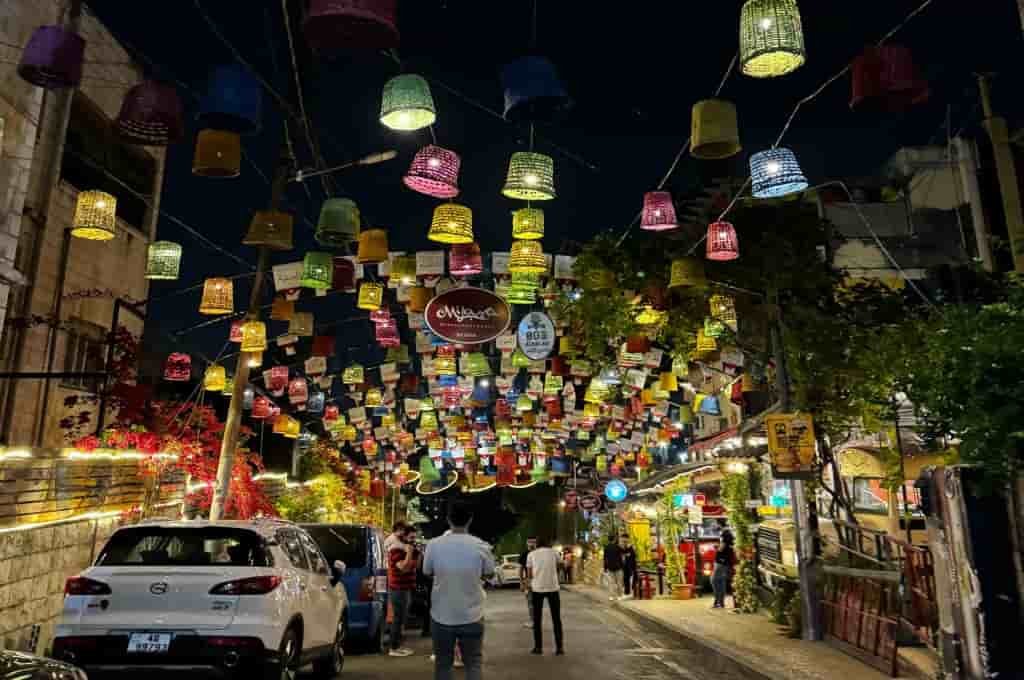
Day 5th of Jordan Itinerary – Wadi Mujib and Mt. Nebo
Take an early morning plunge in the Dead Sea, particularly if you didn’t get a chance to do so the evening before. Reach Wadi Mujib by 8:30 a.m. (assuming that you didn’t experience it on the fourth day) and hope it’s open. It takes approximately 25 minutes to get there. After completing the exhilarating trek, return to the hotel, take a shower, eat lunch, and then depart for Amman. Along the way, we would be making stops at Madaba and Mount Nebo. By the time you get to Amman, it will be evening. Could you check into your hotel for the night?
- Mt. Nebo- It is claimed that Moses first saw the ‘Promised Land’ here. Mt. Nebo is also thought to be the final resting place of Moses. The hilltop complex includes Moses Memorial Church and a serpentine cross sculpture at the Memorial Viewpoint. The entrance to the church costs 3 JD and is not covered by the Jordan Pass.
- Madaba – It is best known for the magnificent Byzantine mosaics that adorn its churches and houses. The main attraction is the beautiful 6th-century mosaic map of the Holy Land, located on the floor of Saint George’s Church.
Day 6th of Jordan Itinerary – Amman
Today we intend to do local sightseeing (Citadel, Roman Theatre) and wander around the historic center, stopping at the local Souq. Then we’ll proceed to Jerash (approximately an hour from Amman). Given the size of Jerash, you can easily spend a few hours exploring the area. In the evening, could you go to Rainbow Street? It is also a perfect place to do souvenir shopping and eat a meal of your choice. Another night in Amman.
Day 7th of Jordan Itinerary – Fly Back
Today marks the end of our Jordan itinerary. It’s time to fly to your next destination.
How Can I make this a 5-day itinerary?
After visiting Petra on the second day, you can travel straight to Wadi Rum (2 hours). Spend the second night at Wadi Rum. You will not reach in time for a sunset tour, so take a sunrise tour the next morning. After that, leave for the Dead Sea. This way, you’ll save one day.
To save another day, simply skip the seventh day in Amman. Once you return from the Dead Sea, leave the country the next day. You won’t be visiting Jerash or doing any local sightseeing in Amman.
Things to Know before traveling to Jordan
- Spring (March- May) and autumn (September– October) are the best times to visit Jordan. These are the top months to escape the summer heat and winter chills.
- Jordan grants visas on arrival to many countries, which includes India. The cost is 40 JD. Not sure what kind of visa you qualify for? Find all the details here
- Jordan has right-hand traffic, which requires you to drive on the right side of the road.
- Communication with locals is easy as most people speak and understand English.
- Many locals understand several languages including Hindi, French, German, Spanish, etc. So, be mindful of what you say in front of taxi drivers, guides, shopkeepers, and others.
- Although Jordan is not a conservative country, it is still necessary to respect their culture by dressing modestly and avoiding revealing too much skin in public.
- Alcohol is not widely available in Jordan as it is a Muslim country. You can find it in five-star hotels, high-end restaurants, and liquor stores, but most eateries will most likely not serve alcohol.
